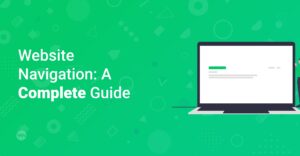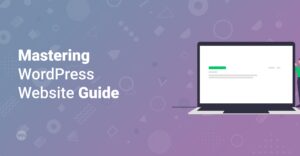Preface
Are you ready to supercharge your website’s speed and user experience? In the fast-paced digital world, optimizing your images is crucial, especially when using powerful page builders like Elementor. Slow-loading images can frustrate visitors and negatively impact your search engine rankings. This blog post dives into effective Elementor image optimization tips to help you improve your website’s load time and keep your audience engaged.
Let’s transform your website into a speed demon!
Why Image Optimization Matters for Your Website
Website speed is a critical factor for success. Here’s why:
- Improved User Experience: Nobody likes waiting for a website to load. Fast loading times lead to happier visitors and lower bounce rates.
- Better SEO Rankings: Google prioritizes fast-loading websites. Optimizing your images can boost your search engine rankings.
- Increased Conversions: A speedy website can improve conversions, whether it’s sales, leads, or sign-ups.
- Reduced Bandwidth Usage: Optimized images reduce bandwidth consumption, saving you money on hosting costs.
Definition: Image optimization is the process of reducing the file size of your images without sacrificing quality. This ensures faster loading times and a better user experience.
Understanding Image Formats
Choosing the right image format is the first step in optimization:
- JPEG: Ideal for photographs and complex images with lots of colors. JPEGs use lossy compression, which means some data is discarded to reduce file size.
- PNG: Best for images with text, logos, and graphics that require transparency. PNGs use lossless compression, preserving image quality.
- WebP: A modern image format developed by Google that offers superior compression and quality compared to JPEG and PNG. It supports both lossy and lossless compression.
- GIF: Suitable for animated images and simple graphics with limited colors. GIFs use lossless compression but are not ideal for photographs.
Hint: For most website images, WebP or optimized JPEGs strike the best balance between file size and image quality.
Elementor Image Optimization Techniques
Now, let’s explore practical tips for optimizing images within Elementor.
1. Resize Images Before Uploading
One of the most effective ways to reduce image file size is to resize images to their actual display dimensions before uploading them to WordPress.
- How to Do It: Use image editing software like Adobe Photoshop, GIMP (free), or online tools like TinyPNG to resize your images.
- Why It Matters: Uploading large, high-resolution images and relying on Elementor to resize them can slow down your website.
2. Use the Correct Image Format
As mentioned earlier, choosing the right image format can significantly impact file size.
- For Photographs: Use optimized JPEGs or WebP.
- For Logos and Graphics: Use PNG or WebP.
3. Compress Images
Image compression reduces file size without significantly impacting image quality. There are several ways to compress images:
- Online Compression Tools: Use websites like TinyPNG, ImageOptim (for Mac), or Compressor, io to compress images before uploading them to WordPress.
- WordPress Plugins: Install image optimization plugins like Smush, Imagify, or ShortPixel to automatically compress images upon upload.
4. Enable Lazy Loading
Lazy loading is a technique that delays the loading of images until they are visible in the user’s viewport. This can significantly improve initial page load time.
- Elementor’s Built-in Lazy Load: Elementor has a built-in lazy loading feature. To enable it, go to Elementor > Settings > Features and activate ‘Lazy Load Images.’
Info: Lazy loading not only enhances speed but also conserves bandwidth, especially for users on mobile devices.
5. Optimize Image Alt Text
Image alt text (alternative text) is an HTML attribute that describes the content of an image. Optimizing alt text is important for both SEO and accessibility.
- How to Do It: When uploading images to WordPress, add descriptive alt text that includes relevant keywords. Be specific and concise.
- Why It Matters: Alt text helps search engines understand the content of your images, improving your website’s SEO. It also provides context for visually impaired users who rely on screen readers.
6. Use Elementor’s Image Widget Effectively
Elementor’s Image widget offers various settings that can impact image optimization.
- Image Size: Choose the appropriate image size for the display area. Avoid using larger sizes than necessary. Start with ‘thumbnail’ and experiment!
- Image Quality: Adjust the image quality setting to balance image quality and file size. A setting of 70-80% often provides a good balance.
7. Implement a Content Delivery Network (CDN)
A CDN is a network of servers that stores and delivers your website’s content, including images, from locations closer to your users. This can significantly reduce loading times, especially for visitors from different geographic regions.
- How to Do It: Use a CDN service like Cloudflare or KeyCDN.
- Why It Matters: CDNs improve website speed and performance by reducing latency and bandwidth usage.
8. Leverage Browser Caching
Browser caching allows web browsers to store static assets, such as images, locally on users’ devices. When a user revisits your website, the browser can load these assets from the cache instead of downloading them again.
- How to Do It: Use a caching plugin like WP Rocket or W3 Total Cache to enable browser caching.
9. Optimize for Mobile Devices
With the majority of web traffic coming from mobile devices, it’s essential to optimize images for mobile viewing.
- Responsive Images: Use responsive images that automatically scale to fit different screen sizes. Elementor’s Image widget supports responsive images.
- Adaptive Images: Consider using adaptive images that serve different image sizes based on the user’s device and network conditions.
10. Monitor Your Website’s Performance
Regularly monitor your website’s performance to identify areas for improvement. Many tools are available to help you track your website’s speed and performance.
- Google PageSpeed Insights: A free tool that analyzes your website’s speed and provides recommendations for optimization. Remember to analyze the mobile version!
- GTmetrix: Another popular tool for analyzing website performance and identifying bottlenecks.
Info: Regularly test your website’s speed using tools like Google PageSpeed Insights and GTmetrix to identify and address any performance issues.
Choosing the Right Image Optimization Plugins
WordPress offers numerous image optimization plugins. Here are a few popular options:
- Smush: A user-friendly plugin that automatically optimizes images upon upload. It offers both lossy and lossless compression options.
- Imagify: A powerful plugin that uses advanced compression algorithms to reduce image file size without compromising quality.
- ShortPixel: A versatile plugin that supports JPEG, PNG, GIF, and WebP image formats. It offers both lossy and lossless compression options.
Before installing an image optimization plugin, ensure it is compatible with Elementor and your WordPress theme. Be sure to read “How to Install WordPress Plugins“
Optimizing Images for SEO
Image optimization isn’t just about improving website speed; it’s also about boosting your website’s SEO. Here are a few tips for optimizing images for search engines:
- Use Descriptive File Names: Before uploading images, rename them with descriptive file names that include relevant keywords. For example, instead of ‘IMG_1234.jpg,’ use ‘blue-widget-elementor.jpg.’
- Add Alt Text: As mentioned earlier, add descriptive alt text to all your images. Use relevant keywords and be specific about the image’s content.
- Create Image Sitemaps: An image sitemap helps search engines discover and index your website’s images. Use a plugin like Yoast SEO to create an image sitemap.
- Use Structured Data Markup: Structured data markup provides search engines with additional information about your images. Use schema markup to define the image’s subject, author, and other relevant details.
Conclusion
Optimizing images in Elementor is essential for improving website speed, user experience, and SEO. By following these tips, you can ensure that your images load quickly and efficiently, keeping your visitors engaged and your website ranking high in search engine results. By resizing images before uploading, using the right formats, compressing images, enabling lazy loading with Elementor, and using a CDN like Cloudflare and image optimization WordPress plugins, you’re well on your way to creating a blazing-fast website. Start implementing these strategies today and watch your website’s performance soar! Remember, Start Making Websites is here to guide you every step of the way. Check out our other guides like “Getting Started with Elementor: The Complete Guide” and “How to Optimize Your Website for SEO: A Quickstart Guide for WordPress” for more tips!




